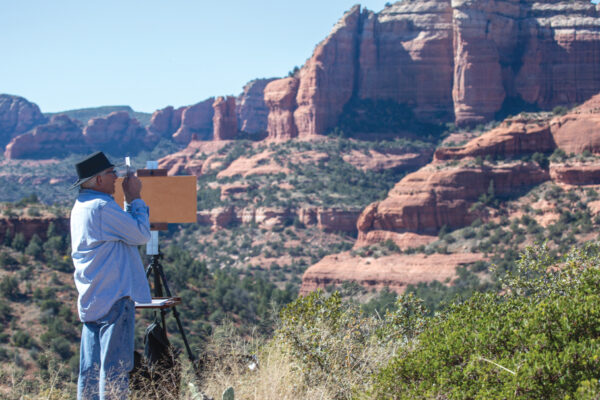Continued (page 3 of 8)
The NAU Skydome opened in 1977 and has 15,000 permanent seats. NAU has a student population of 21,352 at its 738-acre campus in Flagstaff and at more than 35 sites across Arizona. The college was founded in 1899 as Northern Arizona Normal School (it didn’t receive the Northern Arizona University moniker until 1966). The Lumberjacks played their first game in 1915 against Winslow High School and won 26-0. The 2008 football roster includes 78 young men heralding primarily from California and Arizona.
The NAU Lumberjacks have seven games remaining this season, including three home games in October. Tickets range from $9 to $25 for a single game; season tickets ($70-$80) and family passes ($125-$135) are also available. For more info, visit www.nau.edu or call 928-523-5661.
8: Looking for Wildlife
While we can’t guarantee you’ll see moose and grizzlies on the side of Hwy 89A, wildlife sightings in northern Arizona are more common when the temperatures begin to drop and breeding season begins. Depending on weather and animal health, the elk rut can last into the beginning of October while mule deer begin breeding in November and December, says Shelly Shepherd, information and education program manager for Arizona Game and Fish. Antelope are easier to spot as the days become cooler while near Flagstaff it’s interesting to watch animals such as squirrels and (cross your fingers) the occasional black bear as they prepare for a long winter’s nap.
“In the fall people’s activity in the forest increases due to the nicer weather and hunting also picks up, so all that human activity means the animals are on the move,” says Shelly. “If you hike or spend time in the forests, chances are you’re going to see wildlife. We recommend people use a blind, binoculars, and spotting scopes, and always keep your distance.”
You’re more likely to see wildlife at dawn and dusk. We’ve had luck spotting huge herds of elk in the area north of Hwy 179 and east of I-17 – if you have a high-clearance vehicle head up to Apache Maid. There’s a fire lookout at the top of the mountain and the views are stunning – bring binoculars and scan the meadows and valleys beneath you to spot elk, deer, pronghorn antelopes, and flocks of Merriam’s turkeys. You also have a good chance to spot antelopes and coyotes (maybe even the occasional bobcat or mountain lion – between 2,500 and 3,000 live in Arizona) along the dirt roads off F.R. 525, northwest of Hwy 89A between Sedona and Cottonwood. While Shelly says you’re less likely to see reptiles in the fall than in summer, birdwatchers might want to head toward Upper and Lower Lake Mary, Mormon Lake, Frances Short Pond in Flagstaff, Page Springs Fish Hatchery in Cornville, or Tonto Creek Fish Hatchery east of Payson to see waterfowl. Check out the Upper Verde River north of Chino Valley for a chance to spy bald eagles, beaver, badgers, skunks, raccoons, and the gray fox. If you’re hoping for a glimpse of Sedona’s unofficial mascot, the javelina, we’ve had luck at the creekside park at Los Abrigados Resort and Spa, but Shelly says javelina breed year round so you’re just as likely to spot one in the spring.
If you’re hoping to catch a glimpse of one of the giant endangered condors at the Grand Canyon this fall, Shelly says you’ll have better luck spotting the birds in the Vermillion Cliffs region or on the Kaibab Plateau. About one-quarter (50) of the world’s condor population is in Arizona and they tend to move further north in fall. Bald eagles migrate here in December, January, and February, when northern Arizona can become home to as many as 300 birds, but October is a bit too early.
For more information on wildlife viewing in Arizona, visit Arizona Fish and Game at www.azgfd.gov or call 928-774-5045. The agency offers several publications for sale including the new Arizona Wildlife Viewing Guide.



